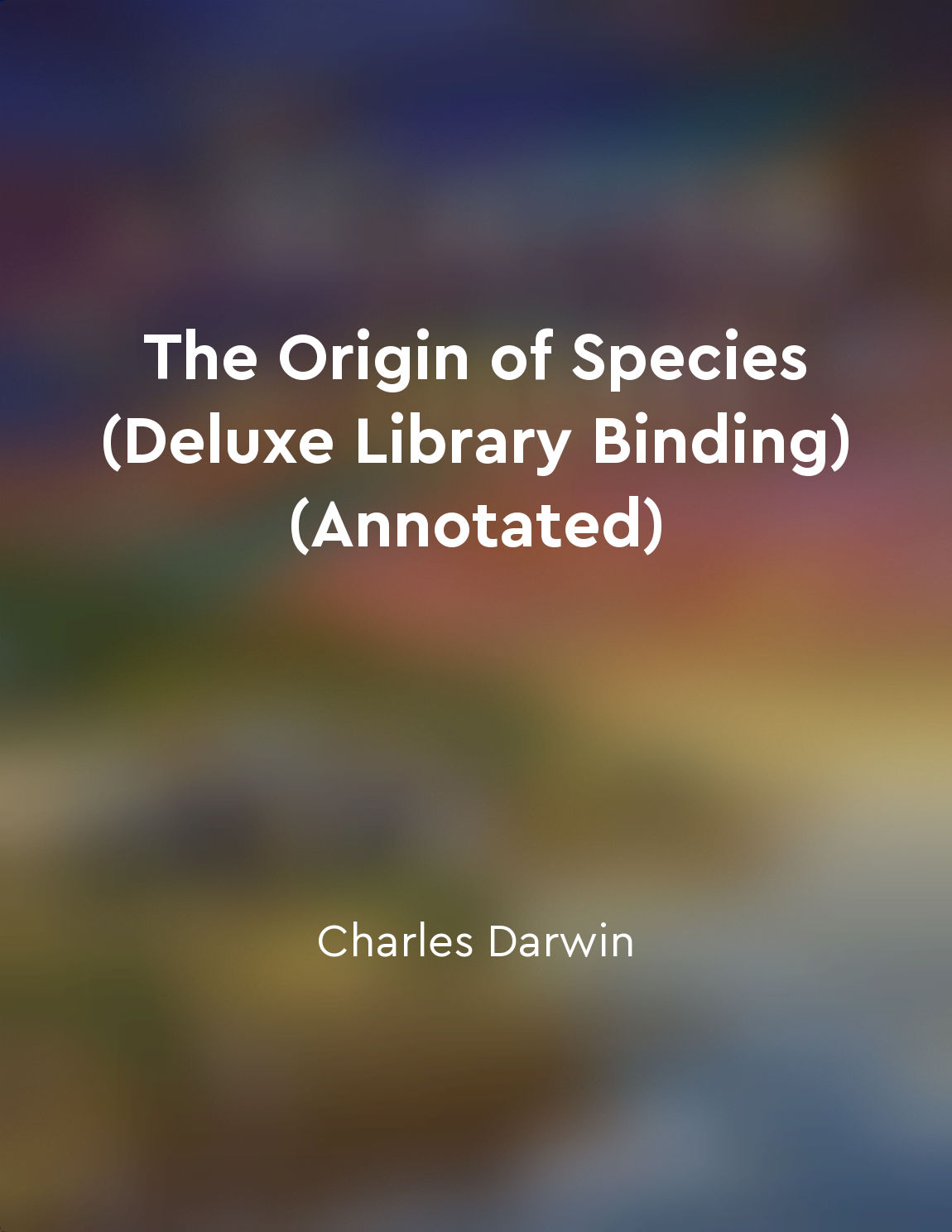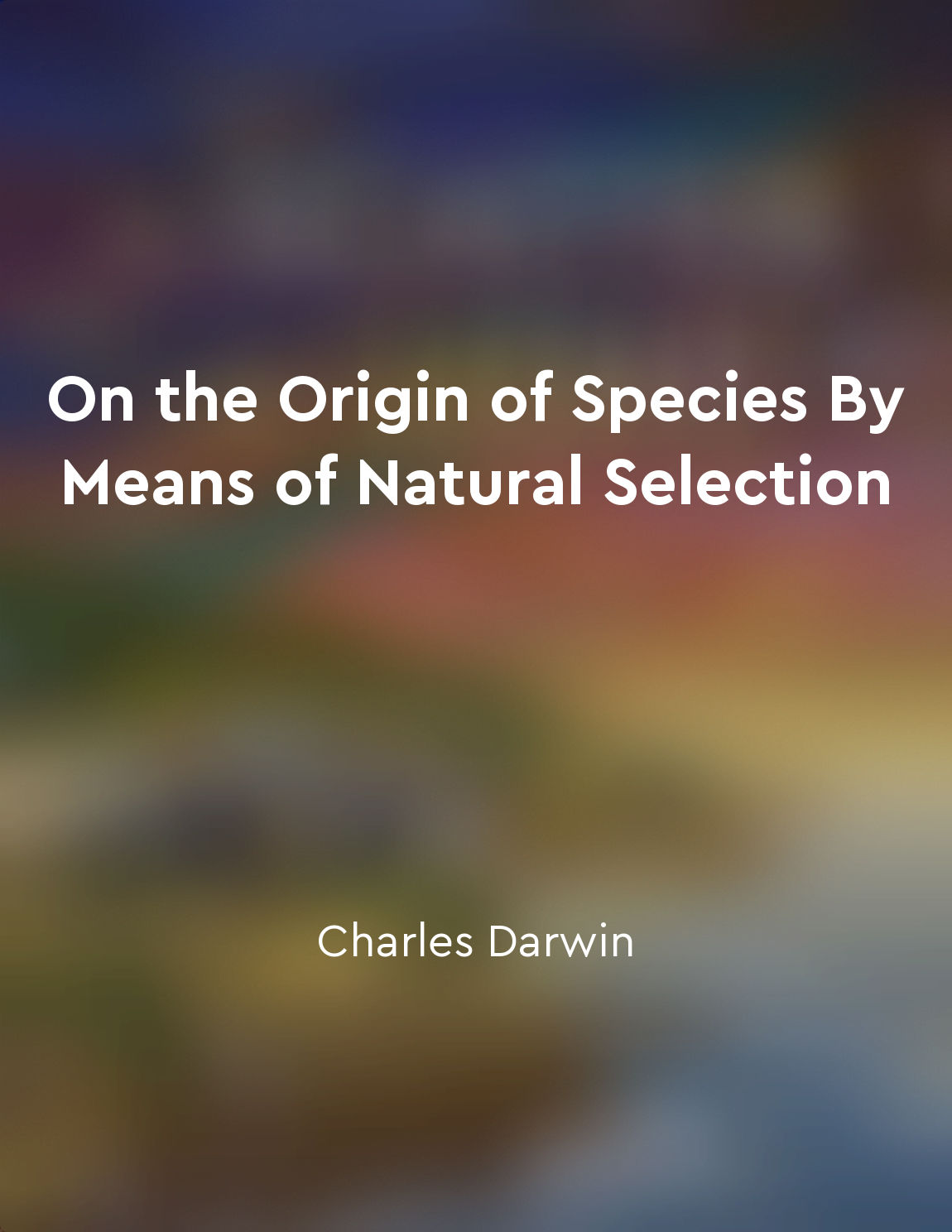Natural selection explains the complexity of living organisms from "summary" of The Origin of Species by Charles Darwin
Natural selection is the process by which individuals that are best adapted to their environment are more likely to survive and reproduce. This process leads to the gradual accumulation of favorable traits within a population, resulting in the diversity and complexity of living organisms that we see today. Through the mechanism of natural selection, simple variations in organisms can lead to the development of complex structures and functions over time. The concept of natural selection provides a simple and elegant explanation for the complexity of living organisms. By focusing on how organisms interact with their environment and how certain traits are passed on to future generations, natural selection offers a clear and logical framework for understanding the diversity of life on Earth. This process of “descent with modification” allows for the gradual emergence of new species and the adaptation of organisms to changing environmental conditions. In the struggle for existence, individuals with advantageous traits have a better chance of surviving and reproducing, passing on those traits to their offspring. Over time, this process can lead to the development of complex features that are finely tuned to the specific demands of a particular environment. Through the accumulation of small changes over many generations, natural selection can give rise to the intricate structures and behaviors that we observe in living organisms today. The idea that natural selection explains the complexity of living organisms is supported by a wealth of evidence from fields such as paleontology, genetics, and comparative anatomy. Fossil records show a pattern of gradual change over time, with new species emerging and existing species adapting to new conditions. Genetic studies reveal how traits are inherited and how variations in DNA can lead to differences in form and function. Comparative anatomy highlights the structural similarities and differences between different species, reflecting their shared evolutionary history.- The concept of natural selection provides a compelling explanation for the complexity of living organisms. By emphasizing the role of adaptation and inheritance in shaping the diversity of life, natural selection offers a coherent and comprehensive account of the evolutionary process. Through the mechanism of natural selection, simple variations can give rise to the remarkable diversity and complexity of the natural world.
Similar Posts
Religious beliefs lead to harmful and divisive behavior
Richard Dawkins argues that religious beliefs often result in harmful and divisive behavior. This is evident in the numerous in...
Empowering farmers with knowledge and resources is vital for ensuring food security
To ensure food security, it is essential to empower farmers with the necessary knowledge and resources. This empowerment enable...

Environmental pressures shape evolution
In the natural world, the struggle for existence is a constant and unforgiving force that drives the process of evolution. Orga...

Diversity results from divergence over time
The gradual process of natural selection leads to the divergence of species over time. As individuals within a species face dif...

Species are dynamic and everchanging
Darwin's observations reveal that species are not static entities, but rather they are in a constant state of flux. This dynami...
Evolutionary psychology explains human behavior
Evolutionary psychology offers a compelling framework for understanding human behavior. By suggesting that our cognitive and em...

Extinction of less adapted species
The process of natural selection inevitably leads to the extinction of less adapted species. As new and better-adapted species ...
The fossil record provides evidence for evolution
The fossil record is a treasure trove of evidence that supports the theory of evolution. Fossils are like snapshots of the past...

Adaptations reflect the functional fit between organisms and their environments
The relationship between organisms and their environments is a key aspect of the study of adaptation. It is through this relati...

